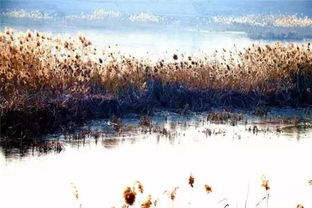Winter river fishing, while often overlooked, can be a rewarding and tranquil experience for anglers. The crisp air, serene landscapes, and the thrill of catching fish in cold water conditions make it a unique pursuit. Here are some essential techniques to help you master winter river fishing.
Understanding Winter River Conditions
Before diving into the specifics of fishing techniques, it's crucial to understand the unique conditions of winter river fishing. Cold water temperatures can significantly affect fish behavior, making them more cautious and less active. However, this doesn't mean they're impossible to catch. Here are some key points to consider:
Water Temperature: Fish become less active as water temperatures drop. Aim to fish in areas where the water temperature is above 40°F (4°C) for the best chances of success.
Sunlight: On sunny winter days, fish are more likely to be active. Plan your fishing trips around sunny intervals to maximize your chances.
Currents: Cold water often holds more oxygen, so fish tend to congregate in slower-moving water. Look for eddies, backwaters, and still pools.
Submerged Vegetation: Winter can make vegetation less visible, but it can still be a great hiding spot for fish. Keep an eye out for submerged logs, rocks, and other natural structures.
Choosing the Right Equipment
The right equipment can make a significant difference in your winter river fishing experience. Here's what you'll need:

Rod and Reel: A medium-heavy action rod with a spinning reel is ideal for winter river fishing. This setup allows for better control and handling of heavier lures and baits.
Line: Use a monofilament line with a lower visibility, such as clear or green. A 6 to 10-pound test line is usually sufficient for most river fish.
Lures and Baits: Jigs, spinners, and soft plastics are popular choices in winter. Look for colors that mimic natural prey, such as chartreuse, white, or black.
Winter Gear: Dress in layers to stay warm. Wear a good quality insulated jacket, waterproof pants, and a hat to protect against the cold.
Fishing Techniques for Winter River Conditions
Now that you have the right equipment and an understanding of the conditions, here are some specific fishing techniques to help you catch fish in winter:
Early Morning or Late Evening: Fish are often most active during these times, so plan your fishing trips accordingly.
Work the Shallow Water: In winter, fish tend to move into shallower water to stay warm. Cast your lures into the shallow areas and work them slowly.
Vertical Jigging: Use a jigging technique to entice fish. Drop your lure to the bottom, then lift it a few inches and let it fall back to the bottom. Repeat this motion to mimic a struggling prey.
Soft Plastic Rigging: Rig soft plastics like grubs or worms on a jig head or a Carolina rig. Work them through the water column, focusing on slower retrieves.
Cover the Water: Fish can be spread out in winter, so it's important to cover as much water as possible. Cast in different directions and vary your retrieves to ensure you cover all potential fish-holding areas.
Adjust for Cold Water: In cold water, fish may be more cautious, so it's important to be patient. Take your time to work your lure through the water, and be prepared for longer pauses between casts.
Observe the Water: Pay attention to the water's surface. Fish may rise to the surface to breathe, indicating that they are in the area.
Be Prepared for Weather Changes: Winter weather can change rapidly, so always be prepared for cold temperatures, wind, and snow.
Final Thoughts
Winter river fishing may present unique challenges, but with the right techniques and mindset, it can be a highly rewarding experience. Remember to respect the natural environment and the fish you're targeting. By understanding the conditions, choosing the right equipment, and employing effective fishing techniques, you'll be well on your way to success on the winter river. Happy fishing!












